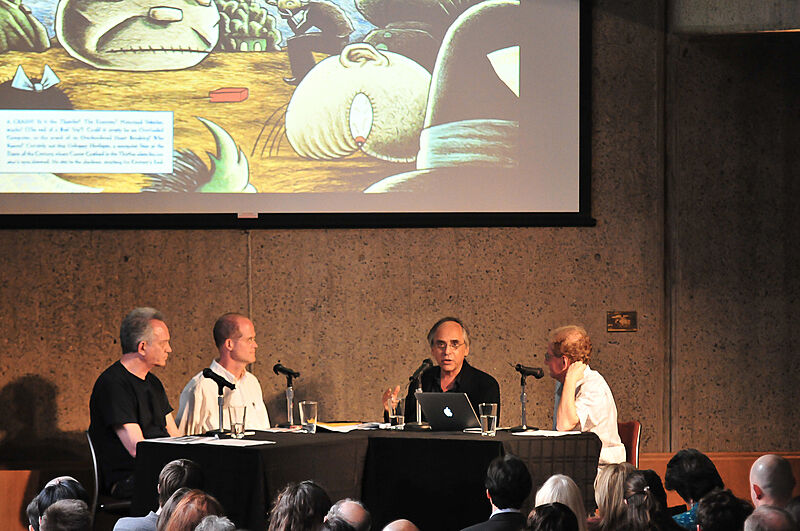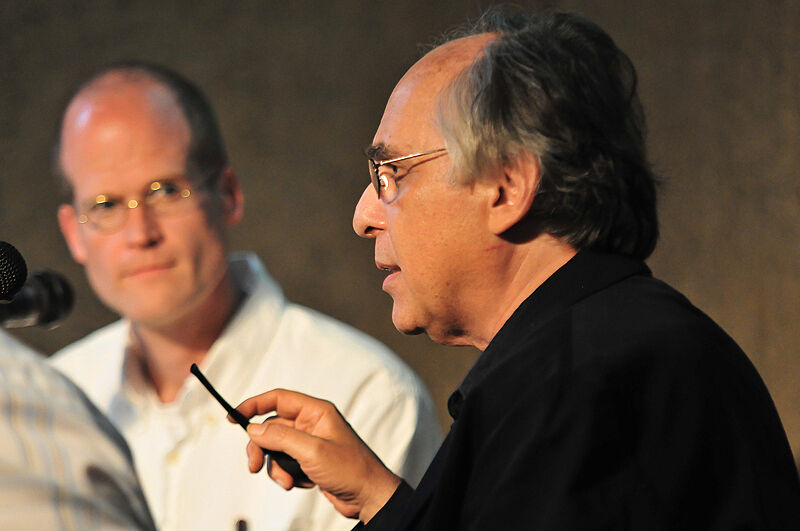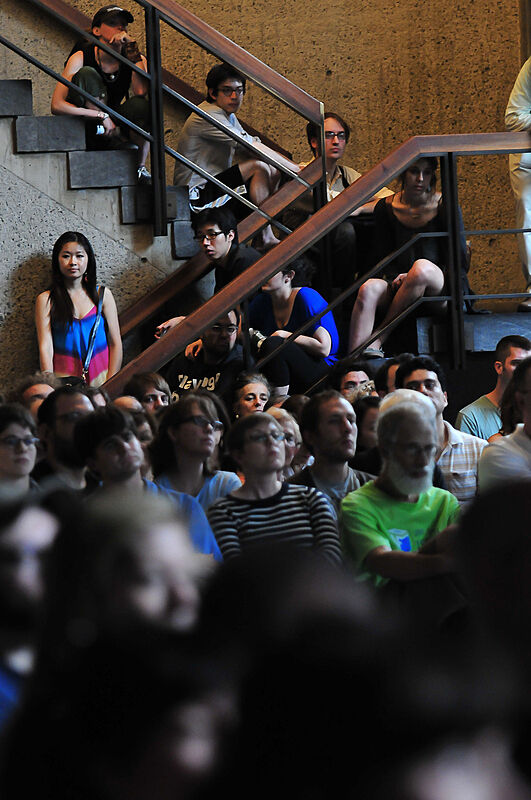The Fine Art Of Comics
Aug 22, 2011
Comic fans flocked to the Whitney on July 20 for a panel discussion featuring graphic artists Gary Panter, Art Spiegelman, and Chris Ware. “The Fine Art of Comics,” a discussion about the intersections of comics and fine art, was moderated by John Carlin. This program was held in conjunction with the exhibition Lyonel Feininger: At the Edge of the World, on view through October 16, 2011. Feininger began his career as an artist by drawing comic strips for the Chicago Sunday Tribune and some of his comics, including “The Kin-der-Kids” and “Wee Willie Winkie’s World,” appear in the exhibition. The topic proved to be particularly relevant as Panter, Spiegelman, and Ware discussed how art school, museums, and criticism shaped their careers.
Each of the speakers on the panel is an accomplished comic artist who has been influenced by Feininger and is also influential in the world of contemporary comic art: Gary Panter is known for his graphic novel Jimbo as well as his design for the set of PeeWee’s Playhouse; Art Spiegelman is founder of the acclaimed comics magazine RAW, and Pulitzer-Prize winner for his graphic narrative Maus; and Chris Ware’s work has been published in the New Yorker magazine and The New York Times, and shown in the 2002 Whitney Biennial exhibition. The moderator, John Carlin, curated The Masters of American Comics exhibition and contributed an essay to the catalogue, Lyonel Feininger: At the Edge of the World.
Art school was a topic that surfaced several times throughout the conversation, and proved to be an interesting way to discuss the convergence of comics and fine art. For example, Spiegelman didn’t go to art school, but learned his craft by studying comic books. Ware, however, received more formal training at art school, but was encouraged to be a painter, not a comic artist. Although they arrived at their careers in different ways, Spiegelman and Ware both felt like “outsiders” in the world of fine art. All three panelists remarked that they felt humbled to be in conversation at a packed public event at the Whitney.
The panelists also answered questions from the audience following their discussion, including one from Barbara Haskell, curator of the Feininger exhibition. Haskell asked if any of the artists on the panel felt differently about Feininger’s comics after seeing his other work, which includes paintings, prints, photographs, and small toys that he made for his children. Panter responded, “[Feininger’s work is] so rich. There’s so much going on you could get sick from looking at it.” It was clear to the audience how much the panelists admired each other’s work. For example, Ware said, “Almost every cartoonist younger than me owes their eyes to Gary [Panter].” Also apparent to the audience was that fine art and comics may continue to intersect more frequently in the future.
By Lauren Rosenblum, Public Programs Intern



